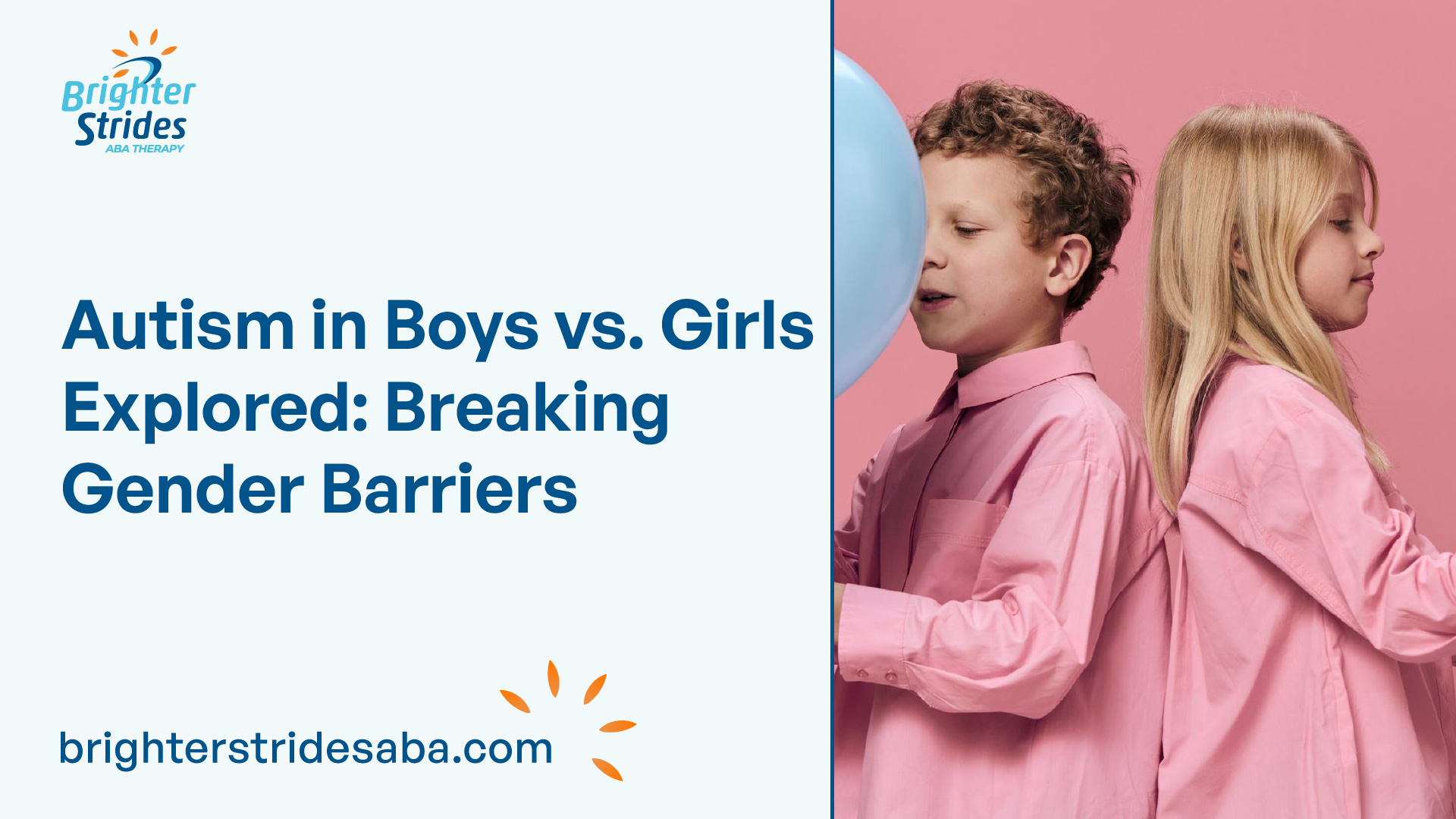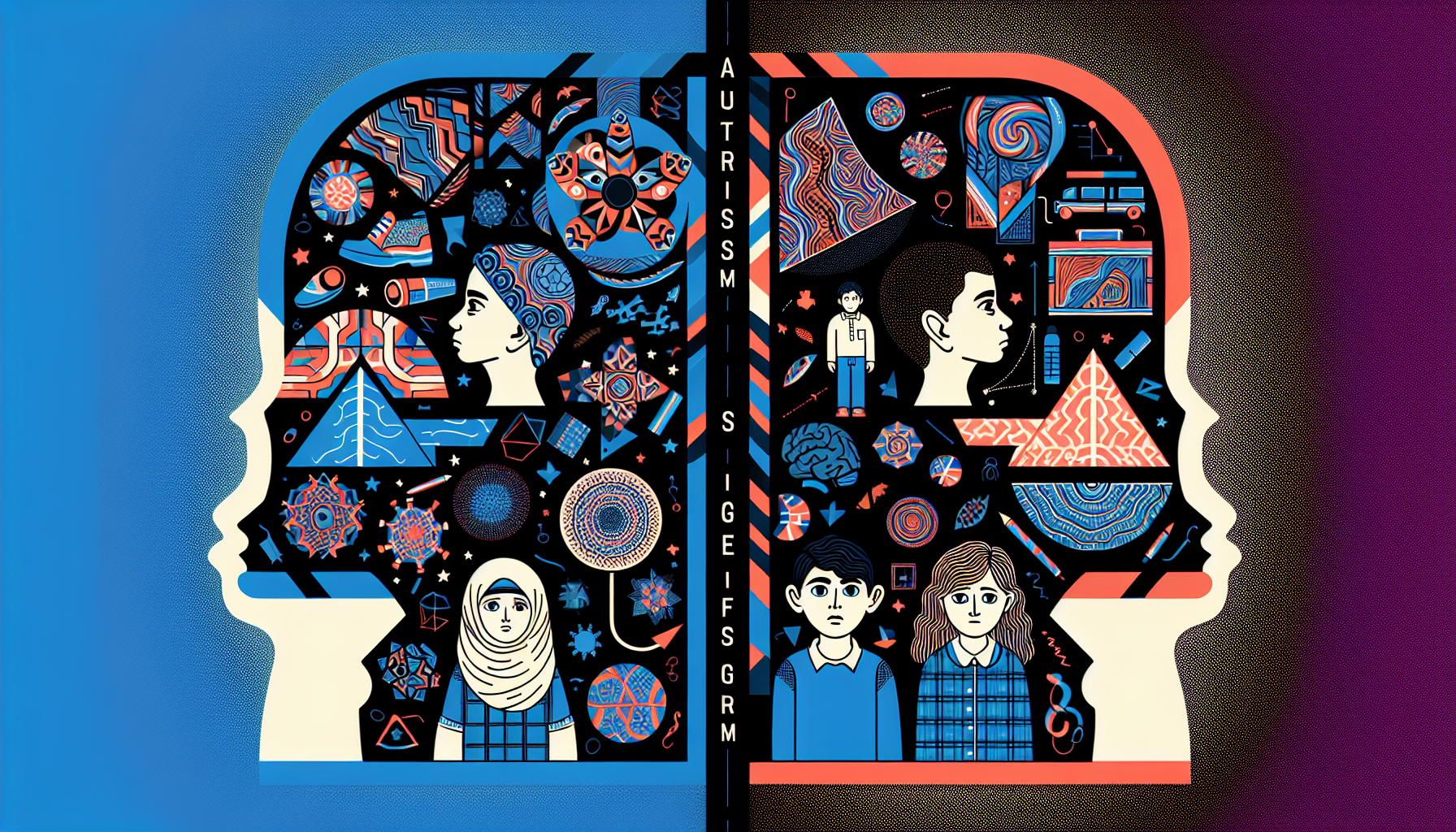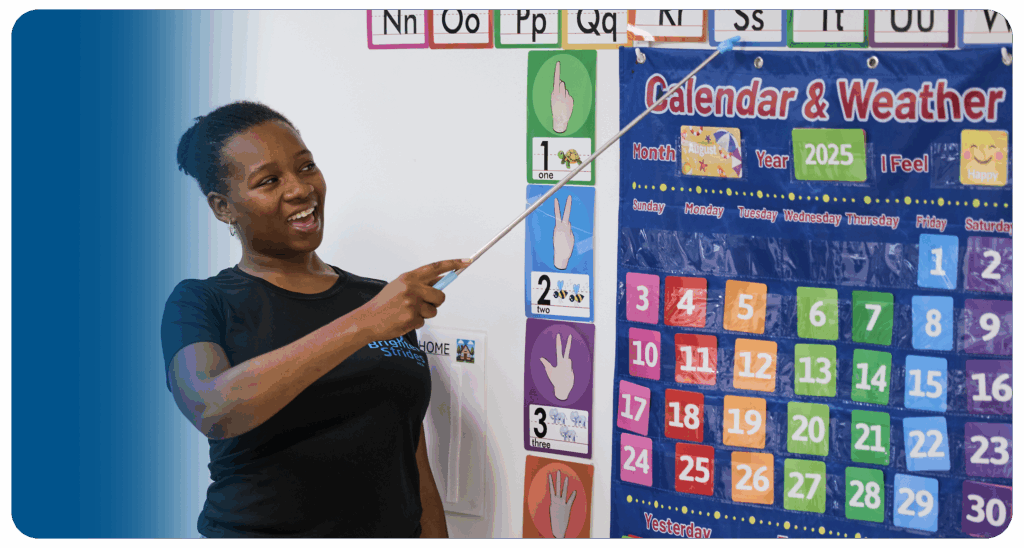Autism Diagnosis Discrepancy
Autism spectrum disorder (ASD) affects individuals regardless of gender, but there is a significant discrepancy in the diagnosis rates between boys and girls. Boys are nearly 4 times more likely to be diagnosed with autism than girls, as reported by the Centers for Disease Control and Prevention. The Public Health Agency of Canada also estimates that ASD is 4 to 5 times more common in boys than in girls [2].
Gender Disparity in Autism Diagnosis
The gender disparity in autism diagnosis raises questions about the potential underdiagnosis of girls on the autism spectrum. Girls with autism often exhibit different characteristics and may learn to mask or compensate for autistic traits, making it challenging for them to receive an autism diagnosis [3]. This can result in delayed diagnosis in females compared to males.

Challenges in Diagnosing Girls with Autism
One of the challenges in diagnosing girls with autism is that they may not display the same behavioral variances that are often associated with boys on the spectrum. Autistic traits in girls may be subtler, leading to certain traits being perceived as part of their personality or dismissed as mere quirks. These subtle differences can be missed during the diagnostic process.
Moreover, research has shown that autistic girls may not readily identify with conventional gender norms and may have higher rates of gender variance. This further complicates the diagnosis and understanding of autism in girls, necessitating more research for a comprehensive understanding of these gender-specific patterns.
The disparity in autism diagnosis between boys and girls highlights the need for increased awareness and understanding of the unique ways in which autism can manifest in different genders. By recognizing and addressing the challenges in diagnosing girls with autism, we can ensure that all individuals on the autism spectrum receive the support and resources they need.
Characteristics of Autism in Boys vs. Girls
Autism is a neurodevelopmental disorder that affects individuals regardless of gender. However, there are notable differences in how autism manifests in boys compared to girls. Understanding these behavioral variances, social interaction patterns, and self-expression differences is crucial in improving autism diagnosis and providing appropriate support.
Behavioral Variances
Boys are more likely to be diagnosed with autism than girls. According to the Centers for Disease Control and Prevention (CDC), boys are nearly four times more likely to receive an autism diagnosis than girls [1]. The Public Health Agency of Canada estimates that autism spectrum disorder (ASD) is 4 to 5 times more common in boys than in girls.
Autistic boys often display repetitive behaviors, intense interests, and a preference for routine. They may engage in repetitive movements like hand-flapping or rocking. These behavioral variances are frequently observed and serve as important diagnostic criteria for autism.
Social Interaction Patterns
Girls with autism may exhibit different social interaction patterns compared to boys. They may have a strong desire for social connection and may attempt to engage with others, but they may struggle with understanding social cues and maintaining reciprocal relationships. Autistic girls may learn to mask their autistic traits or overcompensate for them, making it challenging for them to receive an autism diagnosis.
In some cases, autistic girls may not display all the “typical” traits associated with autism. Their symptoms may be subtler, leading to traits being perceived as part of their personality or simply quirks. As a result, the diagnosis of autism in girls may be delayed or missed entirely, hindering access to necessary support and interventions.
Self-Expression Differences
Autistic girls may demonstrate self-expression differences compared to boys. Research has indicated that autistic girls may not readily identify with conventional gender norms and may have higher rates of gender variance. This requires further research for a better understanding of the relationship between autism and gender identity [3].
It’s important to recognize that these characteristics are general observations and may not apply to every individual with autism. Autism is a spectrum disorder, and each person’s experience is unique. It is crucial to consider individual differences and seek professional evaluation for an accurate diagnosis and appropriate support.
Understanding the varied characteristics of autism in both boys and girls is essential in ensuring early identification, intervention, and support for individuals on the autism spectrum. By promoting awareness and knowledge about these differences, we can work towards breaking gender barriers and providing effective care for all individuals with autism.
Factors Influencing Diagnosis
When it comes to diagnosing autism, several factors can influence the process, including cultural perspectives and gender stereotypes. These factors play a significant role in the identification and timely diagnosis of autism in both boys and girls.
Cultural Perspectives
Cultural expectations and norms can contribute to the missed or misdiagnosis of autism in girls. In some cultures, certain behaviors associated with autism may be seen as typical for girls, such as shyness or being lost in thought. As a result, these behaviors may not raise immediate concerns or be identified as easily as in boys with similar traits, leading to delayed diagnosis in girls.
Cultural perspectives also influence the recognition and understanding of autism symptoms. In some cultures, there may be limited awareness or understanding of autism, making it even more challenging to identify and diagnose the condition in both boys and girls. It is essential to promote cultural competence and awareness to ensure accurate diagnosis and support for individuals with autism across diverse cultural backgrounds.
Gender Stereotypes
Gender stereotypes have played a role in the diagnosis and perception of autism. Historically, research and diagnostic criteria have primarily focused on males, leading to a bias in understanding and recognizing autism in girls. The misconception that autism primarily affects boys has contributed to the underdiagnosis or misdiagnosis of girls with autism [3].
Girls with autism may also exhibit different patterns of behavior and social interaction compared to boys. They may learn to mask or camouflage their autistic traits, mimicking neurotypical behavior to fit in. This masking can make it more challenging to identify autism in girls, as they may appear to be coping well or exhibit different symptoms than what is commonly associated with autism in boys [4].
To address the influence of gender stereotypes, it is crucial to promote awareness and understanding that autism can affect individuals of all genders. By recognizing the diverse presentation of autism in both boys and girls, healthcare professionals can ensure more accurate and timely diagnoses.
Understanding the impact of cultural perspectives and gender stereotypes is vital for improving the diagnosis and support of individuals with autism, regardless of their gender. By raising awareness, advocating for early screening, and providing culturally competent care, we can bridge the gap and ensure that both boys and girls with autism receive the necessary support and resources they need.
Brain Variances and Diagnosis
Understanding the differences in brain structure between boys and girls with autism spectrum disorder (ASD) is crucial for diagnosing and treating the condition. Research has shown notable variances in brain structure that can help explain some of the disparities observed in the diagnosis and presentation of autism in boys versus girls.
Brain Structure Variances
Brain-scan analysis has revealed several gender differences in brain structure between typically developing boys and girls. When comparing children with autism to their neurotypical counterparts, a distinct set of gender differences in brain structure becomes apparent [5].
While the exact nature and significance of these variances are still being studied, it is clear that boys and girls with autism display different patterns in brain development. These differences may contribute to the variations observed in behavioral and cognitive characteristics between the sexes.
Implications for Diagnosis and Treatment
The gender differences in both behavioral and brain measures have significant implications for diagnosing and treating autism in boys and girls. Clinicians need to be aware of these differences and tailor their approaches accordingly.
Girls with autism often exhibit less repetitive and restricted behavior compared to boys. They may also present with different social interaction patterns and self-expression differences. These distinct characteristics, coupled with the brain variances, highlight the need for clinicians to be vigilant and considerate of the unique presentation of autism in girls.
Additionally, the gender differences in brain structure underscore the importance of early identification and intervention. Girls with autism may be at risk of late diagnosis due to their ability to mask autistic traits or overcompensate for them. By recognizing and addressing these gender-specific differences, professionals can provide more effective support and interventions for individuals with autism, regardless of their gender.
It is essential to continue research and expand our knowledge of the brain variances associated with autism in boys and girls. By advancing our understanding of these differences, we can improve diagnostic accuracy, enhance treatment approaches, and ensure that both boys and girls with autism receive the appropriate care they need.
Diagnostic Bias and Detection
Gender plays a significant role in the diagnosis of autism spectrum disorder (ASD), with boys being diagnosed more frequently than girls. Boys are nearly four times more likely to be diagnosed with autism than girls, according to the Centers for Disease Control and Prevention. ASD is estimated to be four to five times more common in boys than in girls, as reported by the Public Health Agency of Canada.
Impact on Autism Diagnosis
The disparity in autism diagnosis between boys and girls has significant implications for understanding and addressing the needs of individuals on the autism spectrum. Girls with autism often exhibit different patterns of behavior and may learn to mask or compensate for autistic traits, making it challenging for them to receive an autism diagnosis. This can result in delayed diagnosis and intervention for females compared to males.
Additionally, cultural expectations and gender stereotypes contribute to the missed and misdiagnosed autism in girls. For example, behaviors like shyness or being lost in thought may not be identified as easily as they would in boys with similar traits, impacting the timely diagnosis of autism in girls. The focus on research primarily on males and the perception that autism is more prevalent in boys has disadvantaged females in diagnosing autism. It is crucial to recognize the signs and symptoms of autism in girls and advocate for timely diagnosis and support for girls and women with autism.
Evolution of Diagnostic Ratios
Research has shed light on the differences between boys and girls with autism, both in terms of behavioral variances and brain structure. Among children diagnosed with the high-functioning form of autism, boys outnumber girls by approximately four to one. Girls with autism tend to exhibit less severe repetitive and restricted behaviors compared to boys with autism.
These gender differences in both behavioral and brain measures indicate that clinicians may need to focus on diagnosing and treating autistic girls differently than boys. To ensure accurate and timely diagnosis, healthcare professionals should be aware of the unique characteristics and challenges associated with autism in girls. Ongoing research and understanding of gender differences will contribute to more effective detection and support for individuals with autism, regardless of their gender.
Treatment Approaches
When it comes to treating autism, play therapy has emerged as a beneficial intervention for children with autism spectrum disorder (ASD). Play therapy provides a safe and comfortable environment for children to engage in play activities, express themselves, and develop essential social and communication skills. In this section, we will explore the benefits of play therapy and discuss different types of play therapy approaches.
Play Therapy Benefits
Play therapy offers numerous benefits for children with autism. It allows them to engage in play activities of their interest and choice, providing a platform for self-expression in comfortable ways [6]. Within the context of play, children with autism can freely express their feelings, emotions, desires, and fears. Play therapy helps them explore different interaction styles and develop social skills in a safe and supportive environment.
By participating in play therapy, children with autism can learn to change their self-expression from unwanted behaviors to more non-injurious expressive behavior. The therapy aims to prevent or solve psychosocial difficulties and promote healthy growth and development in children with autism. It supports the unique mental abilities and developmental levels of each child, fostering optimal growth and development.
Types of Play Therapy
Different types of play therapy can be tailored to meet the unique needs and differences of children with autism. The selection of the most suitable play therapy approach depends on the individual child’s evaluation and assessment.
- Child-Centered Play Therapy: This approach involves following the child’s lead and allowing them to choose the activities they enjoy. The therapist provides a supportive and non-judgmental environment where the child feels encouraged to express themselves freely. Child-centered play therapy helps children with autism develop social and communication skills.
- Child-Led Play: Similar to child-centered play therapy, child-led play allows the child to take the lead in the play activities. The therapist follows the child’s cues and interests, fostering a sense of empowerment and self-confidence. This approach promotes social interaction and communication skills.
- Floor Time Play Therapy: In floor time play therapy, the therapist or caregiver engages in play with the child on their terms. The focus is on meeting the child at their developmental level and building a connection through shared play experiences. Floor time play therapy helps children with autism develop emotional regulation, social skills, and self-expression.
By utilizing these different types of play therapy, children with autism can benefit from a tailored treatment approach that addresses their specific needs. Play therapy offers a holistic and child-centered approach to support their development, enhance social skills, and improve overall well-being.
References
- https://www.cdc.gov/ncbddd/autism/signs.html
- https://www.canada.ca/en/public-health/services/diseases/autism-spectrum-disorder-asd/signs-symptoms-autism-spectrum-disorder-asd.html
- https://www.verywellhealth.com/signs-of-autism-in-girls-260304
- https://www.spectrumnews.org/news/autisms-sex-ratio-explained/
- https://med.stanford.edu/news/all-news/2015/09/girls-and-boys-with-autism-differ-in-behavior-brain-structure.html
- https://www.ncbi.nlm.nih.gov/pmc/articles/PMC9850869/





